
What's the problem?
Since Russia started its full-scale war against Ukraine in 2022, many Ukrainians have lost limbs in combat or Russian air attacks and shelling of peaceful cities and towns. The exact number of military personnel who have undergone amputations during the full-scale war is kept confidential for security reasons. However, according to publicly available data, the Ukrainian government funded prosthetics for 20,000 people — both civilians and military — in 2023.
Modern technological prosthetics help people return to everyday life and allow soldiers to continue serving. However, getting used to a prosthetic is a long and challenging process. It usually happens in several stages and can cause physical and psychological discomfort for the new user.
What's the solution?
Ukraine's western city of Ternopil has recently welcomed the MED3DRUK project for people with amputations. Through this project, soldiers receive unique prosthetic covers free of charge. These decorative covers, made from durable plastic, protect the prosthetic, recreate the volume of the lost limb, and help veterans socially adapt.
We spoke with Yevhen Loza, a co-founder of MED3DRUK, a PhD in Medical Sciences, and the chair of the NGO Power of Revival, to learn more about how the initiative works.
How does it work?
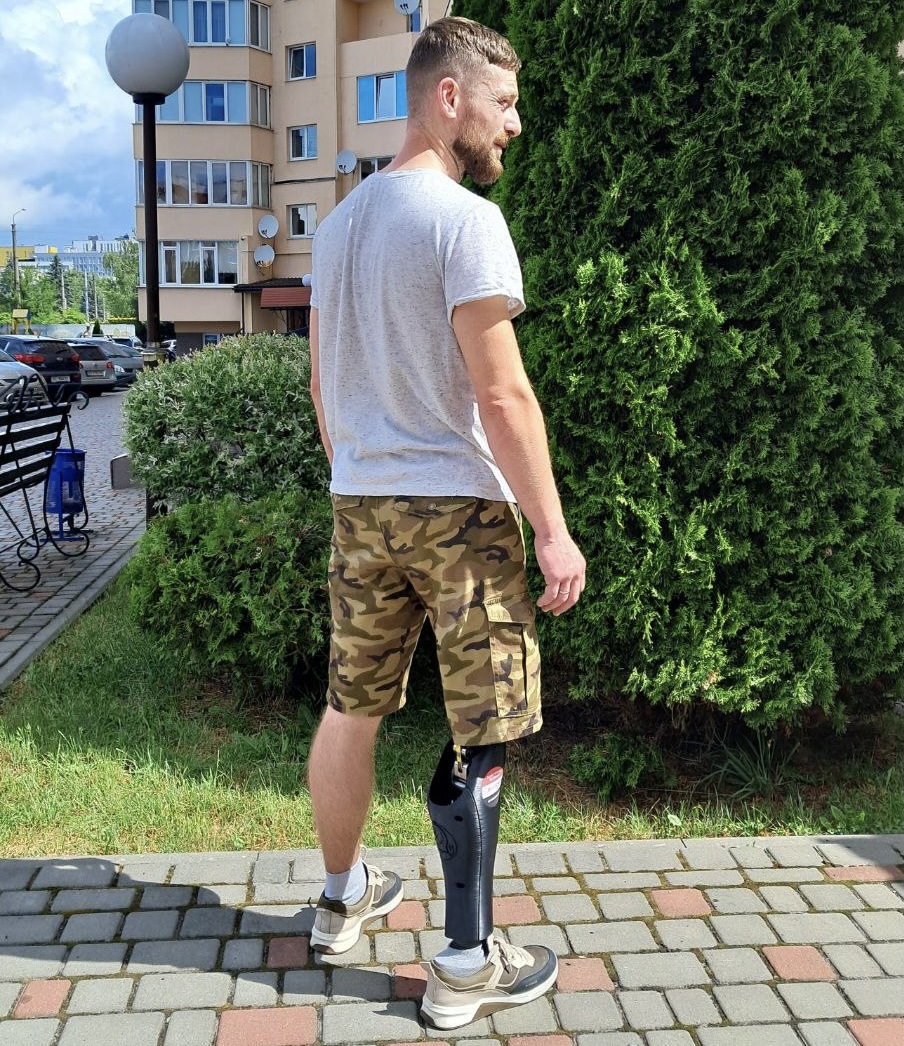
A soldier with a MED3DRUK cover on his prosthetic. Photo from the project's archive
MED3DRUK is a Ukrainian project that creates personalized decorative covers for functional leg prosthetics using 3D scanning, modeling, and printing. Each cover is designed to reflect the user's unique style and personality.
The project was founded by Yevhen and Khrystyna Loza, a husband-and-wife duo of doctors. The team also includes engineers, designers, medical professionals, and technical experts from various parts of Ukraine and the world.
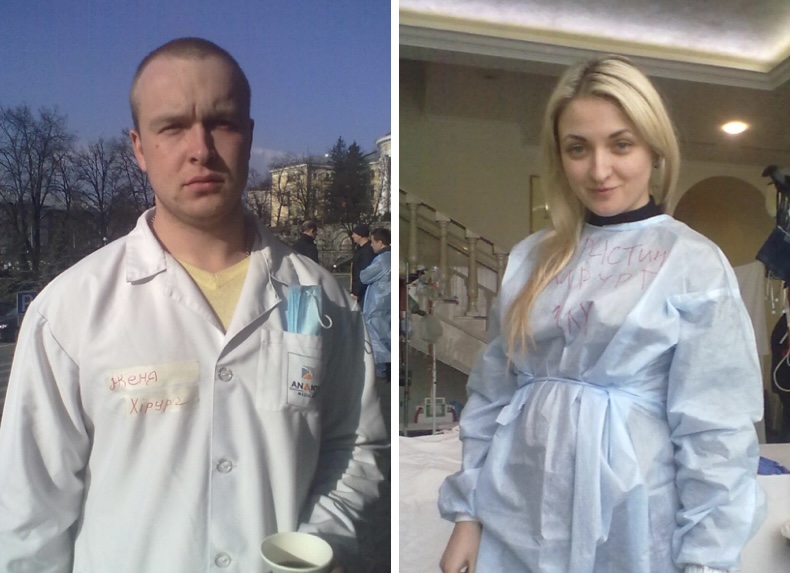
The founders, Yevhen and Khrystyna Loza, have been together since the 2014 Revolution of Dignity, a series of civil protests for Ukraine's European integration, where they volunteered as surgeons. Photo from their personal archive
Yevhen Loza says the doctor duo got the idea for making prosthetic covers after they visited a hospital where Ukrainian soldiers undergo prosthetic fitting and rehabilitation.
"One veteran shared how often he catches the eyes of passersby and children — people pay a lot of attention to his prosthetic," says Yevhen. "This made us think about creating decorative covers to reduce unwanted attention and boost the confidence of people with amputations."
The project's co-founder says Ukraine experiences a need and demand for such covers, and the idea is not new and has been tested over time. He first saw prosthetic covers several years ago while studying in the United States through the Open World Program at the Library of Congress. Yevhen spoke with many veterans during this time and saw them using such covers.
Initially, the project was called DIY3DRUK — from the Ukrainian word "diy," which means "act," but it was later renamed MED3DRUK. The founders believe this name better reflects the main focus of their work — the development and production of medical products, such as leg prosthetic covers and orthoses.
"We use modern technology and a creative approach to create truly helpful and unique products. Our work reflects our mission — to help people who have lost a leg regain their confidence and express themselves," the project founders told Rubryka.
Why are prosthetic covers needed?

A prosthetic cover with a military unit patch. Photo from the project's archive
Prosthetic covers serve several vital functions:
- Protection: Covers act as a protective shell, reducing wear and the risk of damage to the prosthetic, extending its lifespan.
- Comfort: Covers restore the lost volume of the leg, making it comfortable to wear clothes.
- Aesthetics: Covers allow users to express their individuality and style through an attractive design. Users can choose designs and colors that suit their preferences and needs.
- Social adaptation: Covers help users integrate more easily into society, return to an active lifestyle, and feel confident.
Besides covers, the initiative also produces orthoses — orthopedic devices that stabilize and support damaged limbs, helping them function normally. 3D-printed orthoses perfectly match each patient's anatomical features, ensuring maximum comfort and effectiveness. The 3D scanning and printing technology ensures high precision in making each device, improving its functionality and comfort.
MED3DRUK works closely with medical institutions, especially prosthetic and orthopedic centers, with contracts with the National Health Service of Ukraine (NHSU). This cooperation allows soldiers to receive covers for free in addition to their prosthetics.
"But our designs will help everyone who needs prosthetics," says Yevhen Loza.
How can a soldier get a prosthetic cover?
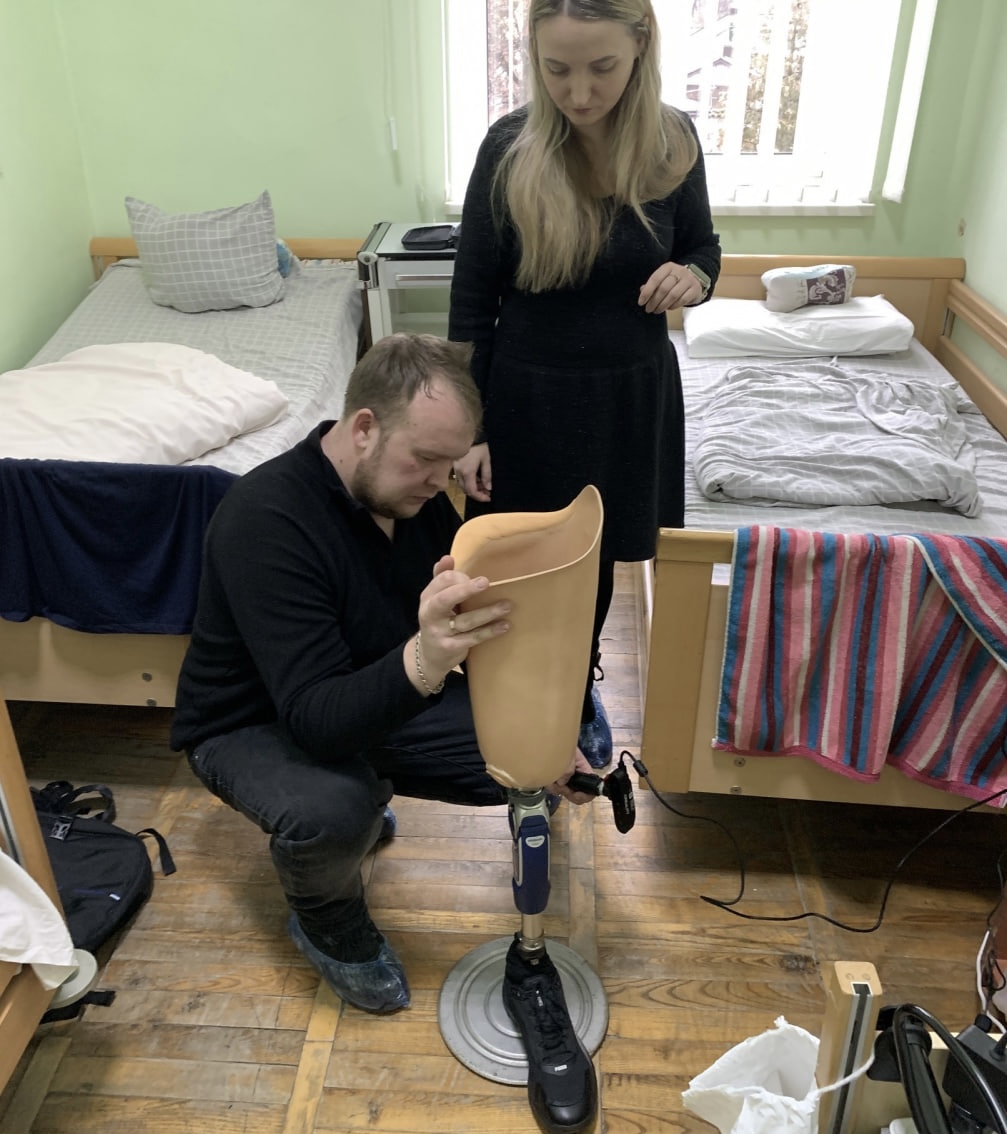
Khrystyna and Yevhen Loza scanned a prosthetic for modeling covers and attachments. Photo from the project's archive
A soldier needs to register on the project's website to order a cover. After that, project representatives will take measurements, design, and print the cover. Each cover is customized according to the user's anatomical features.
"We model the prosthetic cover based on the mirror image of the healthy leg. If there are no two limbs, we create the desired shape from a photo," says Yevhen Loza.
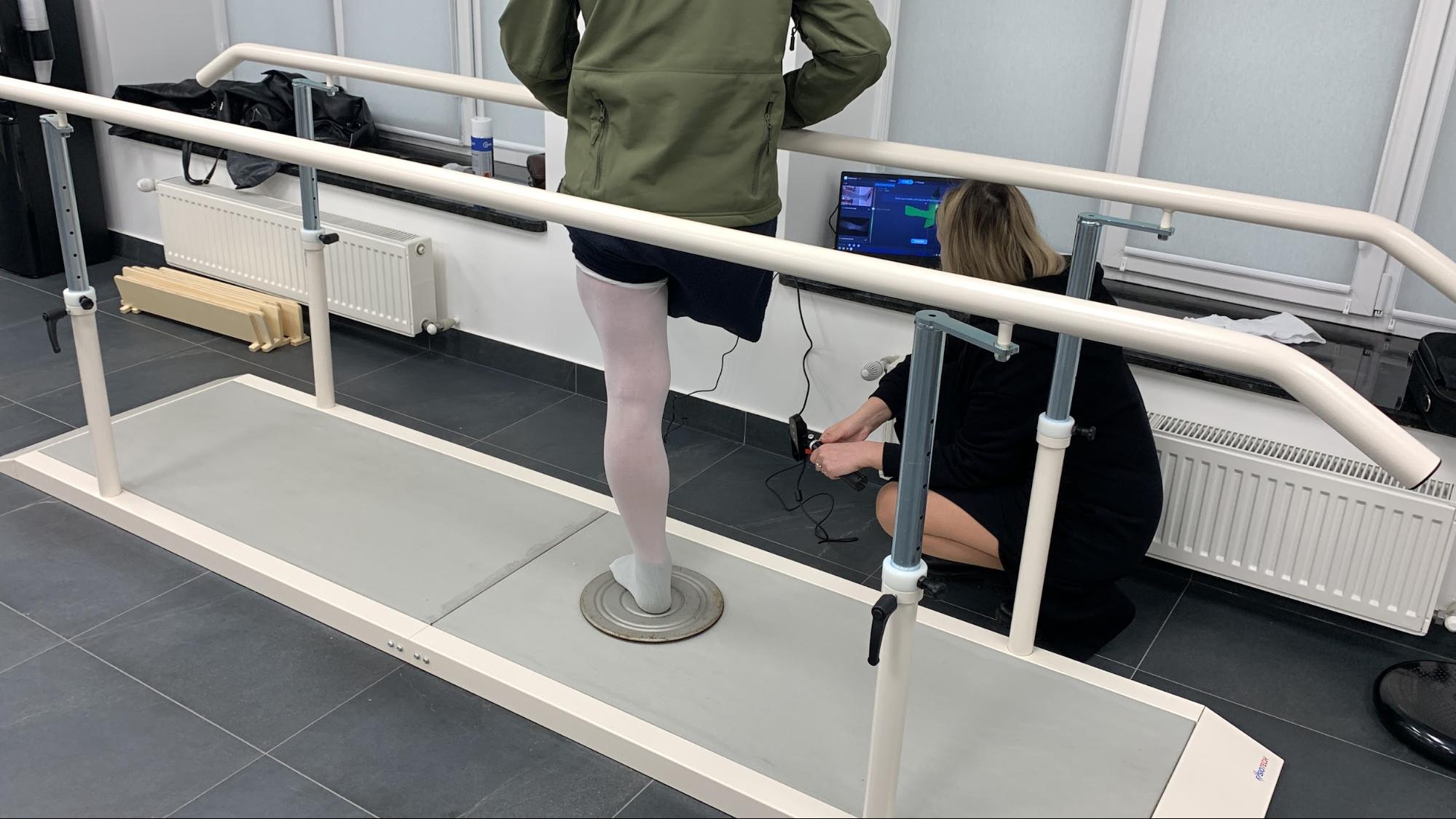
The scanning of a leg on a disc. The patient rotates around an axis. Photo from the project's archive
To make a cover, the project's specialists take an anatomical digital image, using a 3D scanner, and create a 3D model of the product. Then, a designer processes the model in a program and prepares the file for printing. The material for printing the cover is loaded into the printer and heated. It takes about 50 hours to print one cover, which consists of two parts. The printing speed depends on the chosen material.
Users can choose the color and design of the cover from the available options. According to Yevhen Loza, some people ask for the Ukrainian coat of arms, others for their unit patch, and some prefer a simple, smooth cover. Soldiers often choose flesh-colored or black covers, but there are also more daring color choices.
For instance, the project currently has an order for a purple cover. The person creatively approached the need to wear a prosthetic — he also wanted to paint the rims on his car purple to match the cover.
The lifespan of a cover depends on the materials it's made from and the conditions of use. On average, covers can last from one to five years with proper care.
Does it really work?
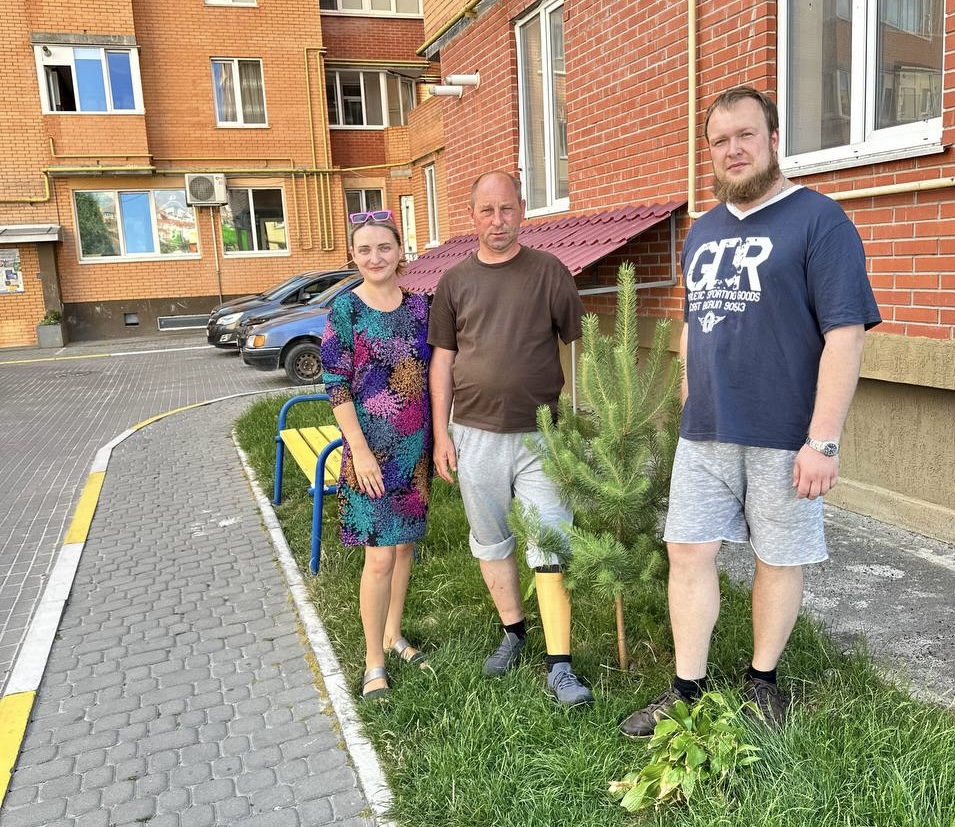
MED3DRUK produces a flesh-colored cover for a veteran who lost a leg and an arm. Photo from the project's archives
The founders of MED3DRUK say the project could only have been started and developed with the support of partners, like-minded people, and volunteers who share the project's mission and values.
The NGO Rotary Club Ternopil City bought a 3D printer and 3D scanner for the project. The website, where you can order covers and orthoses, was created and is maintained by programmers from the east-central city of Dnipro. A specialist from the western city of Lutsk does the design work. The covers and orthoses are printed in Ternopil and other Ukrainian cities, like Chernihiv, Dnipro, Poltava, and more.
Recently, students from Ternopil National Medical University joined the project. They handle the scanning of soldiers in Ternopil. One student's father had a leg amputation and died in Russia's war in 2015, so she decided to help Ukraine's soldiers in this way.
About 35 veterans have so far received MED3DRUK covers. Each of them has their own story.
"Lately, more and more veterans want to return. Some as instructors, others to the battlefield," says co-founder Yevhen Loza. "For example, one soldier who got a cover said it helped him return to an active life and play sports again. He started running and exercising, positively affecting his physical and emotional health."
Another veteran shared that the cover made his prosthetic more comfortable and functional and helped him feel more confident in public. He started wearing his favorite clothes again without worrying about the appearance of his prosthetic.
"These stories and feedback show how important our work is and how we can help people who have gone through tough experiences return to a full life," says Yevhen.
More helpful solutions!
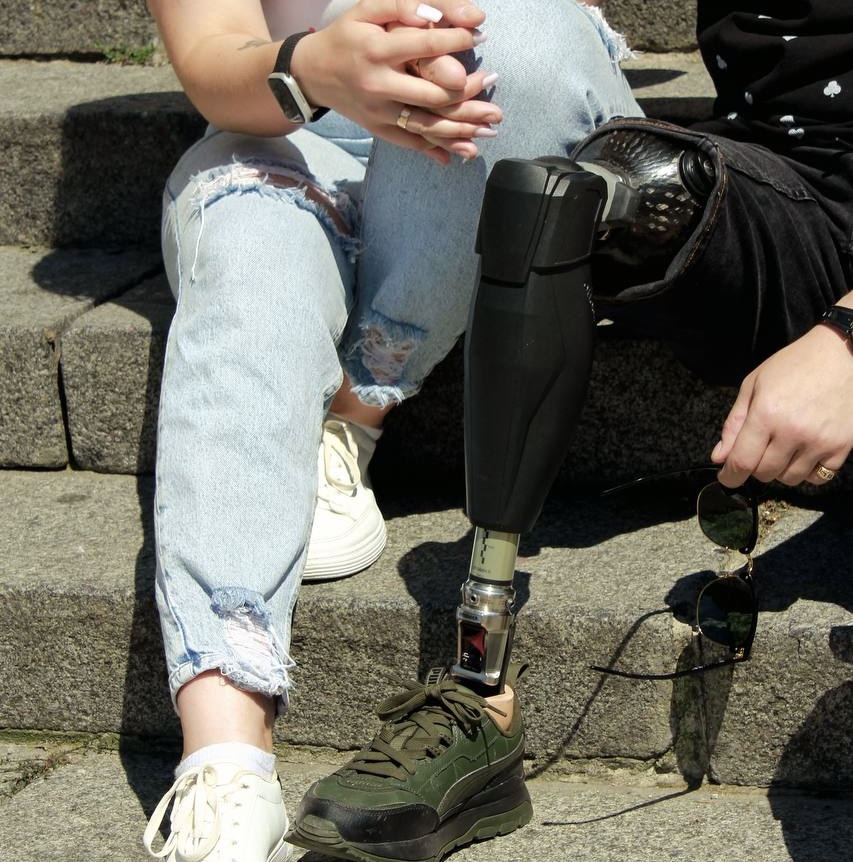
Charity photoshoot for veterans. Photo from the project's archives
Recently, the project began offering free photoshoots to support soldiers who have lost a limb.
"We believe these photoshoots will help our soldiers see themselves in a new light, overcome psychological barriers, and accept themselves as they are — strong, brave, and needed," says the MED3DRUK team.
People with amputations face many myths and prejudices in Ukrainian society. It's often believed that people with amputations can't live whole lives, always need help, and that prosthetics are uncomfortable and constantly painful. The initiative disputes these stories.
"Thanks to modern prosthetics and rehabilitation technologies, people with amputations can do sports, dance, work, and travel. Yes, support and help are important, but many people with amputations are completely independent and can handle everyday tasks without outside help," says Yevhen Loza.
The MED3DRUK co-founder notes that Ukrainians currently lack understanding that amputation is not a sentence and knowledge about the possibilities of modern prosthetics.
How do we raise awareness and support veterans?
- Educate: Launch awareness campaigns to increase understanding of the lives of people with amputations and dispel myths.
- Support rehabilitation: Fund rehabilitation and prosthetics programs and provide psychological support.
- Develop and implement employment programs: Promote job opportunities for people with amputations, including employer support.
- Integrate prosthetics and rehabilitation information into educational programs for medical and technical students to prepare young specialists to work with people with amputations.
"My dream is to create conditions where every person with an amputation can not only regain their physical abilities but also find a full place in society where their skills and abilities are valued regardless of their health status," says Yevhen Loza.
The MED3DRUK project is open to collaboration. To become a project partner or offer your help, you can write an email or send a private message to the project's Facebook page.






